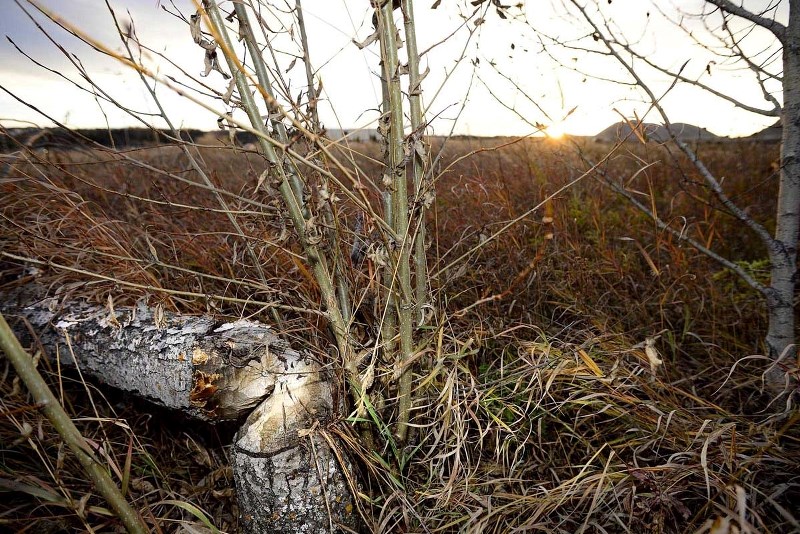The Town of Cochrane is asking Cochranites who peruse the pathways to be mindful of signage indicating beaver management (trapping) in areas throughout the Ranche Site and Glenbow this fall season.
According to Gerry Murphy, parks manager for the town, when town staff observes beaver damming occurring, they reach out to town-contracted Eagle Creek Wildlife Control; the town has managed beavers within the town for many years.
Eagle Creek sends out licensed trappers to identify areas to set live and lethal traps and the town assists with signage.
“When the beavers are trapped, they come out and remove them,” said Murphy, adding that people should avoid going near the traps and keep dogs leashed in areas where signage indicates beaver trapping is ongoing.
Ron Hanson started Eagle Creek some 20 years ago, followed by 30 years of service as a Fish and Wildlife officer.
He is no stranger to beavers, also known as ‘the largest North American rodent’, and the extensive damage they can cause — including damming culverts, softening road beds and railroad tracks and removing trees.
Hanson said his trappers set both live and lethal traps but that beavers are managed through euthanization — which he said is the most humane form of management.
“From a moral standpoint, moving (relocating) beavers at this time of the year is just not an option,” he said, explaining that the beaver population is at an all-time high.
With the national and international massive decline in the fur trade and the absence of population management by predators in areas close to urban centres, the beaver population is saturated.
Hanson explained that most ‘problem beavers’ are two-year-old males — also the poorest candidates for relocation, as they would either be chased away from new areas by existing beavers or killed.
He also said that beavers have established their feed beds by July, preparing food storage prior to freeze-up; relocating beavers at this time of the year would result in their starvation, as there would not be enough time for the animal to build up its food storage before winter.
When the possibility of relocation of beavers arises, Hanson said there are further complications — including finding areas to relocate them to, as beavers ‘don’t stay put’.
Eagle Creek removes an average of six or seven beavers from the town of Cochrane each year; the company is also contracted by Rocky View County for beaver management.
Hanson said they use the beaver carcasses to supply bear bait for local Fish and Wildlife officers.
“In my opinion, the town parks department has done a spectacular job of beaver management in the Town of Cochrane over the past 20 or more years,” said Guy Woods, director of Bow Valley Habitat Development.
“Without controlling the numbers of beavers within the town boundaries, there would be little riparian habitat along our streams. Also, mature deciduous trees such as old black cottonwoods and balsam poplars would have vanished from the pathway systems along the streams in our park areas.
“Beavers will dam huge areas on streams that will also drown native trees and destroy both access to path systems and park areas along the creeks. We are not living in a wild environment where natural predators can keep beaver populations in check, so we have to take on the responsibility ourselves. Beaver management is a sensitive topic, but in my mind a vital component of good land management, especially in the community of Cochrane.”




